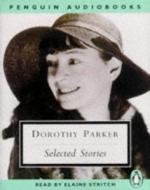|
This section contains 4,942 words (approx. 13 pages at 400 words per page) |

|
In the following essay, Simpson explores how Parker renders race in "Big Blonde," and shows it to be an integral part of the story.
The story "Big Blonde" (1929) articulates some of the ambivalence with which Dorothy Parker's work approaches feminist inquiry. There is a vicious style to Parker's compassionate portrait of a woman hopelessly trapped in social codes of femininity. Just as intriguing, however, is the way race is inscribed in a text so overtly marked as a reflection on gender. Foregrounding the Africanist presence in the text discloses the real source of the story's power to disturb. Blackness surfaces in Parker's story in a way that provides an unusually clear example of the use of racial difference in white America's contemplation of itself. In concert with the critical project Toni Morrison pursues in Playing in the Dark: Whiteness and the Literary Imagination (1992), the present observations represent...
|
This section contains 4,942 words (approx. 13 pages at 400 words per page) |

|




